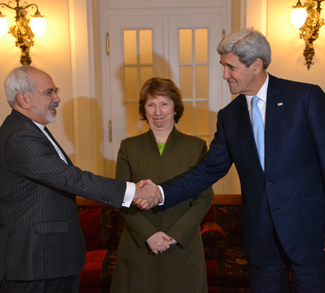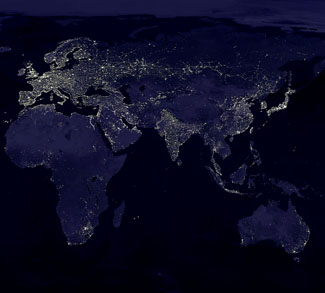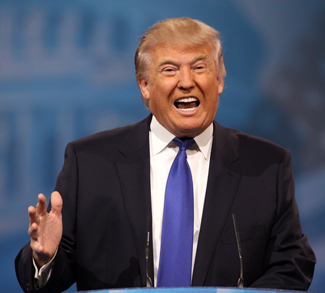Looking farther to the east, the government of the People’s Republic of China (PRC) under Xi Jinping – perhaps the fiercest communist ideologue since Mao Zedong – has been on an expansionist march to dominate the entire arc spanning from South Asia, through Southeast Asia, and to East Asia, in a dream of restoring the Ming Dynasty (1368-1644), the last Han-dominated imperial dynasty which ended in the middle of 17th century CE.
In response to President Obama’s 2013 move to end the United States’ ‘globo-cop’ status, Beijing has actively engaged in island-building projects (out of pre-existing reefs) in the South China Sea, claiming that practically the entire region is PRC sovereign territory. The project had already begun in the early 1990s, when a power vacuum formed after the Clinton administration pulled the US military out of the Philippines. (The PRC government began building structures on Mischief Reef as early as 1995, claiming that the structures were for fishing purposes). Not only is the area resource-rich and part of an extremely valuable sea lane network. It is a strategic asset. The PRC’s acquisition of the South China Sea will enable the maritime region to function as a sanctuary for nuclear-powered submarines, which, armed with SLBMs with improved capabilities (such as the JL-3), can pose a grave danger as far as west coast of North America. It is PRC’s Sea of Okhotsk. A study produced by the Center for Strategic and International Studies (CSIS) in January 2016 predicted that by 2030, the South China Sea will essentially become a Chinese “lake.” In July of 2016, the Permanent Court of Arbitration (PCA) at The Hague ruled that the PRC claim to the South China Sea has no historical basis. Beijing has dismissed the ruling.
This effort to dominate the South China Sea has not subsided, even with the repeated financial crises China has suffered in the past several years. In September 2014, a joint project between Russia and China was unveiled concerning construction of a sea port in Northeast Asia administered by both states. Located on the Russian coast of Sea of Japan, the completion of the project would be the first step in making Sea of Japan a geopolitically significant ‘internal sea,’ much like Mediterranean Sea served for the Roman Empire and the Gulf of Mexico serves for the United States. In September 2016, China and the Russian Federation held an eight-day joint military exercise in the South China Sea (“Joint-Sea 2016”).
Emphasis has repeatedly come down on the PRC’s maritime expansionist strategy. Other than merely being an overt act that disturbs stability in the region, it may also be due to the fact that traditional Chinese regimes were “land-powers” instead of “sea-powers” which is grabbing so much attention.
How will these four authoritarian land-power Eurasian states influence the course of 21st century history?
Traditional enemies of imperial dynasties on the Chinese continent were invading ground forces instead of naval forces until the last several hundred years. Major maritime threats began in the early Ming Dynasty. The Ming regime enacted Sea-ban policy to curb Wokou piracy (comprised of mainly ethnic Japanese – at least in its earlier period – working with disgruntled Chinese armed groups who wished to “stick it” to the Ming establishment) and maritime-based black marketeers. While the famed Zheng He engaged in series of expeditionary voyages in the early 15th century under the Yongle emperor, the project was scrapped due to domestic contention between the land-power faction and sea-power faction, with the former ultimately gaining the upper hand. (Interestingly Zheng He himself was a non-Han sailor of Islamic heritage. His ancestor was the first Yunnan provincial minister who hailed from Bukhara in modern-day Uzbekistan).
Meanwhile, the last major “Chinese” oversea military expansion was during the Yuan Dynasty in the latter decades of the 13th century; it was executed by their Mongolian overlords. Vietnam was invaded in 1258, 1285 and from 1278 – 1288; Sakhalin was invaded beginning in 1264; Japan was invaded in 1274 and 1281; Java was invaded in 1292. All with the exception of the Sakhalin invasion ultimately ended in epic failures.
While multi-state tensions in the South China Sea dispute have gathered constant attention, much has been neglected concerning Beijing’s strategy towards Indochina. While the former strategy concerns expanding via eastern sea, the latter strategy expand via western land. Geopolitically significant are the Mekong and Irrawaddy Rivers, flowing from the Tibetan Plateau into bodies of water surrounding the Indochina Peninsula (the Mekong flows into South China Sea; Irrawaddy flows into Andaman Sea). This makes the Yunnan Plateau an extremely critical geopolitical region as a gateway for China via Tibet under its control.
Beijing is currently spearheading a project to build a three-branched railway system along the north-south axis of the Indochina Peninsula. The project, dubbed the ‘Kunming-Singapore Railway,’ which is set to be completed in 2021, ironically was originally conceived as a 19th century Western imperialist project seeking to link the continental interior with the coast of Indochina. (The PRC is interestingly taking up where the Western empires left off despite Beijing’s supposed Communist “Anti-imperialism.”) One hypothesis about the reason Mao Zedong set the capital in Beijing, and not in Nanjing as previously, was to emulate the imperial dynasties of the past). The completion of the railway system will further entrench the presence of the PRC in Southeast Asia, using Yunnan province as an operational base. This will complement the ‘string of pearls’ strategy (a name coined in 2005 by US consulting company Booz Allen Hamilton – the firm made famous as a former employer of Edward Snowden) to surround economically emerging India with military and commercial facilities funded by the PRC.
US president-elect Donald Trump’s ten minute-long chat with Taiwanese President Tsai Ing-Wen (a call initiated by Ing-Wen a week after nuclear-capable PRC bombers encircled Taiwan) has been re-stirring up the controversy surrounding PRC-Taiwan relations. The PRC government asserts that Taiwan is an indispensable part of its territory under the ‘One China’ policy. Beijing views Taiwan – an island to which the Nationalist government (KMT) was driven after the post-WWII Chinese civil war – as a prime geopolitical asset in its dominance of surrounding maritime territories. Taiwan is situated at the juncture of South China Sea, East China Sea, and the Philippine Sea. Taiwan possesses Mount Yu (elevation of 12,966 ft), which has an iconic status for the Taiwanese people, even commemorated in their currency (backside of NT$1000). If this mountain falls into the hands of Beijing, the situation not only would serve to crush Taiwanese national pride but also potentially function as a military/surveillance outpost to monitor the three regional seas, bolstering Beijing’s power projection capabilities in a significant way. Taiwan is indeed a geostrategic prize for the PRC.
Turkey, Russia, Iran and PRC have another common element in their rise: These states are increasingly showing their presence in Sub-Saharan African (SSA) states, courting both government and private entities with goals of providing investment, handing out aid, building partnerships, engaging in cultural exchanges, develop energy projects, increasing trade and facilitate mineral extraction (wealth of which SSA is blessed with in abundance) – all in an attempt to use the region as a springboard to soar to global heights.
Turkey during the past decade under Erdogan’s rule has not only substantially increased interaction with states in the MENA region, but also with SSA states. Erdogan nostalgically attempts to raise Turkey to the prestige of the Ottoman Empire, which during the 19th century installed dominion over the Sudan (via khedive of Egypt). The relationship between Ankara and SSA states has not only been one of economics, but one also founded in the bonds of Sunni Islam, which is dominant in the northern region of SSA (Christianity is dominant in the central and southern regions). Diyanet (the Directorate for Religious Affairs) led a meeting of Islamic leaders from 21 African countries in November 2006 to synthesize Ankara’s foreign policy with African Islamic societies. A follow-up meeting was held five years later in 2011. An example of this state-religion alliance can be glimpsed in Turkey’s support for the Islamic Development Bank to facilitate industrialization throughout Africa. Turkish foreign policy and Islam are increasingly becoming intertwined in this way.
Russia has been cementing relationships with SSA, as in the former Soviet days, and it has been extending far beyond the traditional arms trade. Unlike Turkey, Russia does not have significant cultural commonality with SSA. While Eastern Christianity, a branch of Christianity that Russia inherited, had a major presence in the SSA’s Horn of Africa (as in the MENA region) – much of Christianity there was uprooted after centuries of Islamic expansion. Currently much of the Christian denominations in SSA region are varieties of the Western Christianity, being Roman Catholic or Protestant (one third of Christian churches are charismatic). Thus Moscow lacks the deep cultural assets that Ankara can utilize in its favor, although Eastern Orthodox communities have been slowly growing in the newly independent South Sudan.
Iran has a stake in SSA region as Tehran unleashes its efforts to build networks in the region. While Islam in the SSA is mostly Sunni, Shia Islam has been growing steadily for the last several decades, especially in West Africa, where there are pockets of Lebanese Shiite settlements who left Lebanon after the civil war. Uranium-rich states (such as the Democratic Republic of Congo) and sources of secondary Uranium sources (i.e. phosphates) are Tehran’s major targets in SSA. With the 2015 Iran nuclear deal already being challenged behind the scenes by Tehran, SSA will continue to be an attractive region to secure instruments for Tehran’s geopolitical and nuclear ambitions.
China also has massively expanded its state-backed activities in SSA for well over a decade, using chaos, corruption, and instability in the region (often produced by borders created by old imperial powers without any regard for ethnic and linguistic distributions) to its advantage. Targeting the fields of mining, oil and energy predominantly, the ever-opportunistic Beijing sells its projects (dominated by natural resource interests meant to keep the PRC’s economic engine rolling) stressing mutual benefit (although much of the reaped interest are for the PRC – it’s known that Chinese companies operating in SSA tend to hire Chinese employees instead of locals, although there may be instances that there is a scarcity of high-skilled workers locally). China also asserts that it will not intervene in the domestic affairs of SSA states.
It is worth noting that Sir Halford Mackinder, founding pioneer in the field of geopolitics, asserts in his 1919 work Democratic Ideals and Reality that there are two Heartlands: One is the well-known Northern Heartland located in the general region of Central Asia. The other is the Southern Heartland, located in the interior of SSA. The penetration of the four rising states mentioned above in the SSA region is the 21st century empires’ struggle for the Southern Heartland. And the chess pieces are being assembled on its chessboard.
Over one hundred years ago, a chain of revolutions and uprisings shook the global political landscape. Commencing from the 1905 Russian Revolution, and spreading to Qajar Dynasty Persia (1906) and to Ottoman Empire (1908-09), the fires of revolution also functioned as a catalyst to trigger the Xinhai Revolution of 1911, ending the Manchurian Qing Dynasty that dominated the Chinese continent for nearly three centuries. (The Manchurian imperial bloodline made a temporary comeback in the 1930s as the Empire of Manchuria, established by Japan as a buffer against the Soviet Union.) Unfortunately, many of these revolutions did not produce lasting stability, and were often incubators of civil wars of which the effects are still felt in the 21st century. Interestingly, these empires are the previous incarnations of the very states that are currently involved in movements for imperial restoration.
How will these four authoritarian land-power Eurasian states influence the course of 21st century history? How will the future global demographics play into the rise of these states? Many major powers today are predicted to experience increases in aged population, and/or population decline by the end of this century. Population size often (although not always) translates into national potential and power. Yet all states explored above, not only the PRC due to its “One Child Policy” and Russia (these two issues are well-recognized), but also Turkey and Iran are seeing demographic crises or full-blown disaster on the horizon. The rise of some of these states may perhaps be more of a short-term phenomenon than a long-term one if nothing is done to avoid the predicted collapse. (Economist David Goldman argues that the Iran nuclear deal was a compensation for possible demographic collapse in Iran in coming decades).
With Donald Trump’s presidential victory, 2016 may truly prove to be a watershed year for those around the world to etch in to their minds. It may be the year that accelerated a reshuffling of geopolitical order that will echo, manifesting most likely in a chain of crises for years to come. However the course of this incoming presidency – already beset with chronic unpredictability – will move the world, expect heated Eurasia-based geopolitical struggle to remain an integral part of international society. The importance of geopolitical analysis will only increase, for the survival of states, businesses, and most importantly common people across the globe in a world in which lasting security seems ever brittle and illusory.




